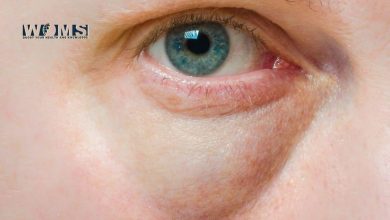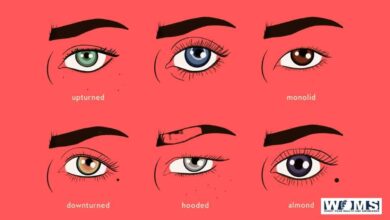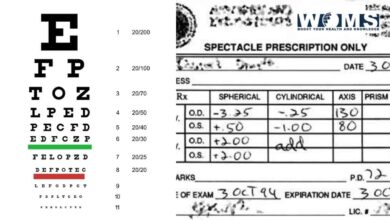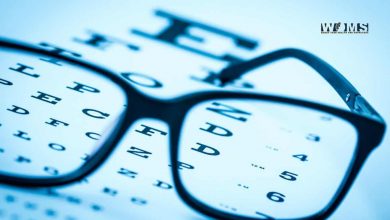Understanding Narrow Angle Eyes
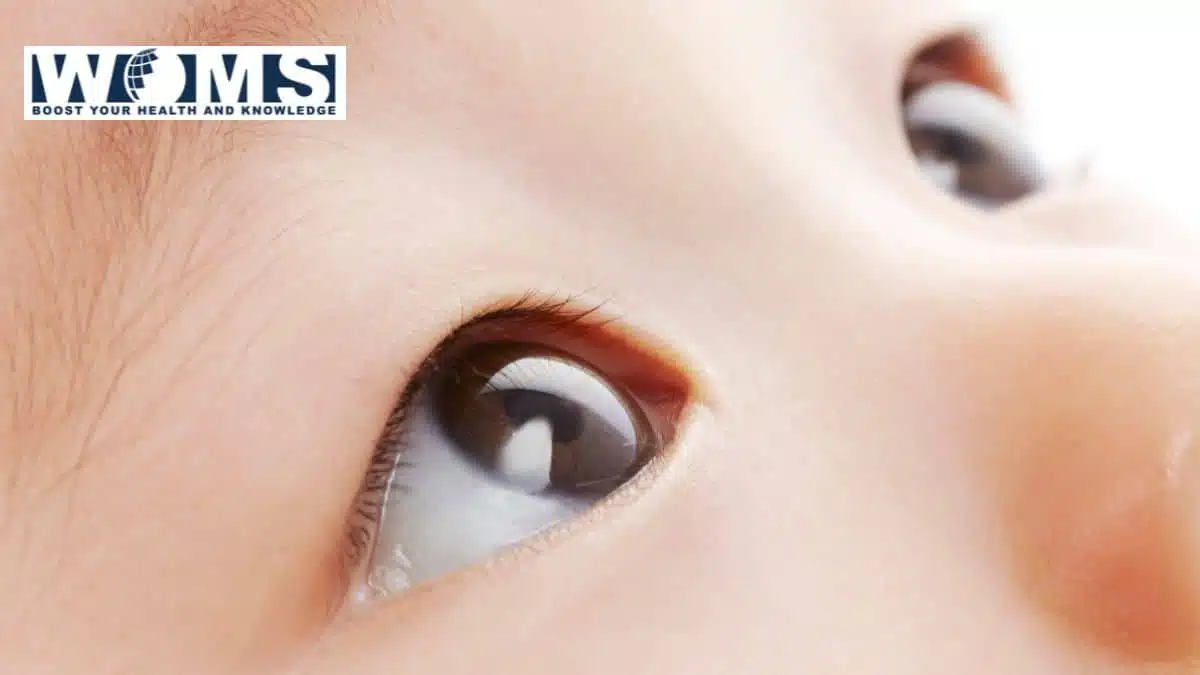
Narrow angle eyes are known by the pathological small angle or space between the iris and cornea. It is a term related to the shape of the eye associated with the drainage angle. This condition is most commonly seen among farsighted people. It is mainly because farsighted people usually have shorter eyes as compared to normal people or nearsighted people.
The drainage system of the eye is present between the iris (colored portion of the eye) and cornea (the clear part of the eye). A narrow angle eye or short eye indicates a decreased area in the front of the eye. There is less space for the lens and iris to adjust properly in front of the eye. In this way, it pushes the iris towards the cornea due to the crowded front area, leading to pathological small angle.
This article summarizes the best details about narrow angle eyes and their associated features to understand in detail. Let us take a deep dive at different aspects of the short eye.
What are the common symptoms associated with narrow angle eyes?
Typically, narrow angle eyes are not associated with any classical symptoms to differentiate. But there are different other conditions that may arise from pathological small angle. When the iris moves forward towards the cornea, it can restrict the drainage system of the eye. This condition may arise from angle closure glaucoma leading to specific symptoms. Some of the main symptoms are as follows:
- Increased pressure symptoms like headache
- Blurred vision
- Nausea
- Vomiting
- Severe pain in the affected eye
- Redness
Sometimes, patients with narrow angle eyes may exhibit intermittent attacks of angle closure. This condition is usually associated with mild to moderate types of headaches facing dark light. Moreover, they may suffer from blurred vision for a few hours, redness of the eye, associated nausea, and vomiting.
How do you assess narrow angle eyes?
A careful assessment of anatomically narrow angle eyes is a hot topic in the field of ophthalmology. It is necessary because of its potentially harmful sequelae of angle-closure glaucoma, sudden acute pain in the eye, and chances for vision loss. For all these reasons, it is necessary to diagnose and examine such conditions to prevent their progression into serious conditions.
It is also necessary to properly diagnose patients with narrow angle eyes before any eye procedure. Some drops can dilate the pupils. Such drip should not be used in people with pathological small angle. As it can dilate pupils, it further reduces the space in the anterior chamber leading to the complete closure of the angle. In this way, this condition can be harmful to such patients.
What are the risk factors for narrow angle eyes?
Any person can have narrow angle eyes. But there are some people who are at high risk for narrow angle eyes. These are as follows:
- People who are hyperopic or farsighted have a high risk for short eye. These are the people who can see distant objects clearly. But they need glasses for reading purposes. Hyperopic eyes are usually smaller than the normal eye. So in such persons, everything is condensed between the iris and cornea leading to narrow angle eyes.
- In contrast to hyperopic patients, elder patients who have not done cataract surgery are also at increased risk to produce pathological small angle. Because, as cataracts develop, it pushes the iris in the anterior direction, leading to narrow angle eyes.
- Patients with a familial history of short eye are also at an increased risk to develop narrow angle eyes.
- There are also different medications that can increase the risk to produce narrow angle eyes. Systemic medications like anticholinergics, topiramate, and sympathomimetics are one of these medications to induce short eye.
What are the confirmatory diagnostic tests to evaluate patients with narrow angle eyes?
It is quite difficult for practitioners to diagnose patients with narrow angle eyes. There are several methods to confirm the provisional diagnosis of pathological small angle. Let us have a look at those confirmatory tests to diagnose narrow angle eyes.
Ineffective dilation
Some clinicians use this strategy to dilate the eye of the suspected patient with narrow angle eyes. The negative results are the indicator of the presence of pathological small angle. During the dilation procedure, angles close late after the maximum contact between the lens and the iris happens. After this examination, angle closure may happen after 2-3 hours of this diagnostic test.
Gonioscopy
Dynamic gonioscopy is the Gold standard diagnostic test for the evaluation of angle closure patients.
Imaging techniques
Anterior segment OCT and B-scan ultrasonography are beneficial tools to assess closed or narrow angle eyes. Moreover, these techniques are useful in patients not compliant with gonioscopy or patients with contraindicated gonioscopy like corneal erosion.
What is the management plan for the narrow angle eyes?
All patients suffering from narrow angle eyes don’t require surgery or any other management. Most of the time, your doctor continues monitoring your eye health and preventing the need for any surgical management. In contrast to such conditions, some patients require proper management of the short eye due to the acutely narrow angles. These patients are at high risk to induce acute angle closure attacks. To deal with such conditions, your doctor may recommend you to go for different treatment substitutes to prevent such closure attacks.
There are some ways to treat pathological small angle. Let us have a look at these treatment options to prevent acute closure attacks.
Laser peripheral Iridotomy
It seems quite a straightforward procedure to treat narrow angle eyes. But, it is also associated with multiple side effects like glare, blurred vision, iritis, and hyphema. The laser creates an escape valve inside the eye to avoid the acute attacks of angle closure. In this way, it makes a way out to drain the fluids accumulated in the eye. In addition, it also decreases the unnecessary pressure in the eye due to fluid accumulation.
If your doctor has suggested laser treatment, it is better to avoid such things or medications that can dilate your pupil before the treatment. When the pupil dilates, it may cause the iris tissue to bunch up inside the drain more aggressively. It may induce an acute angle closure attack.
Lens extraction
Removal of the crystalline lens has a deepening effect on the anterior chamber in patients with angle closure or angle closure glaucoma. It is also one of the best treatment options for the management of narrow angle eyes. Lens extraction is the prime option for patients with cataracts and hyperopic vision.
When there is a need to consult a doctor?
There is no such need to worry about narrow angle eyes unless you suspect some severe symptoms. If you are a farsighted person, you must have an annual check-up with an ophthalmologist to evaluate pathological small angle. Moreover, if you have any other symptoms like pressure, headache, blurred vision, nausea, or vomiting, you must consult your doctor regarding the symptoms.
Conclusion
Narrow angle eyes indicate a decreased space or gap between the cornea. Patients having narrow angle eyes have more crowding in the anterior section to decrease the gap between the angles. This condition, itself, is not problematic. But it may cause several problems leading to critical medical conditions. People with pathological small angle are at higher risk to suffer from acute angle closure attacks.
These angle closure attacks may induce pressure-like symptoms including headache, blurred vision, etc. If you are suffering from such symptoms, you must consult your doctor. Your doctor may suggest you undergo laser treatment or lens extraction procedures depending on your medical health.
Laser therapy is quite helpful because it produces holes in the iris to drain the accumulated fluid from the eye and relieves the pressure symptoms. Moreover, if you are suffering from cataracts or hyperopic vision, your doctor may suggest you undergo a lens extraction procedure. It totally depends on the health of your eye.
Frequently asked questions (FAQs)
Are narrow angle eyes a serious condition?
Normally, patients having narrow angle eyes are not of concern. If you are suffering from any specific symptoms related to narrow angle eyes, then it may lead to serious medical conditions. Short eye are likely to induce acute angle closure attacks. It may induce mild to moderate symptoms depending upon the conditions.
Is narrow angle closure familial?
Angle-closure attacks show familial history running in the families. A family history of angle closure attacks may increase the prevalence to induce angle closure attacks. Therefore, such people are at high risk to develop angle closure attacks.
